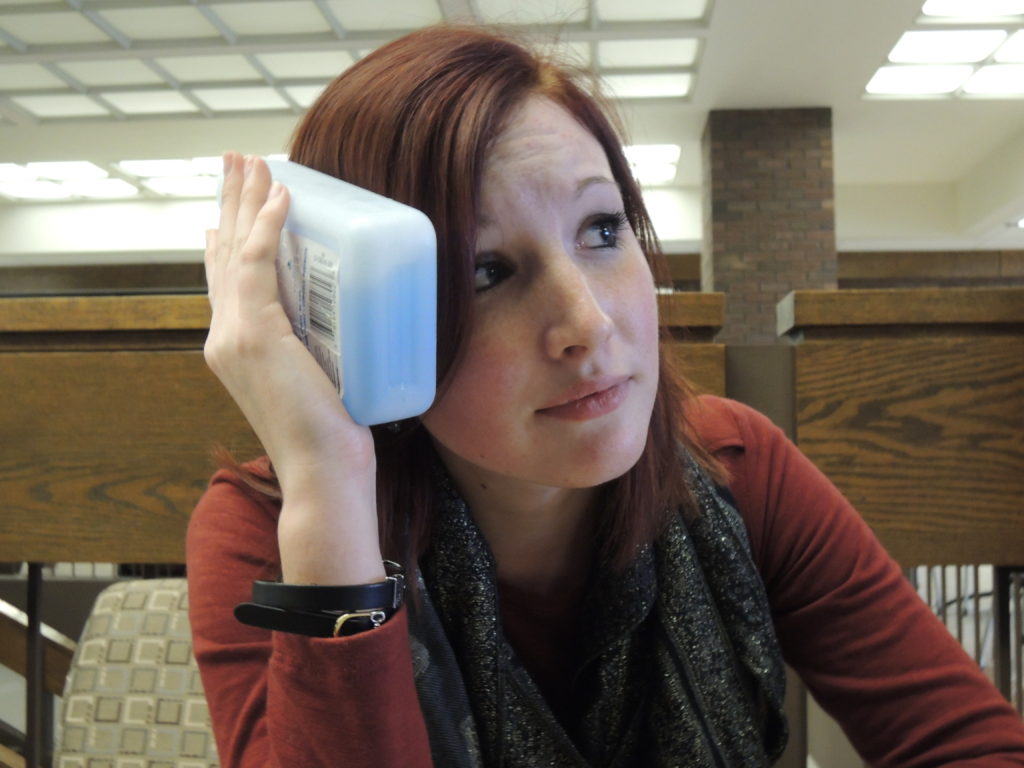IPFW faculty and students organized two events to support Syrian refugees on Dec. 2, including a rally and a panel. The rally served as a peaceful event in response to Indiana closing its borders to refugees, according to Farah Combs and Nancy Virtue, who organized the event.
The rally allowed students, faculty and community members of Fort Wayne to express their support for the Syrian refugees in an outdoor, open-mic setting.
“I wanted to show Fort Wayne, Indiana and the United States in general that people on college campuses are paying attention to these events and they do support refugees,” Elana Merritt, a junior who helped organize the rally, said.
“Our goals were to speak out in support of the Syrian refugees, and to make some sort of public statement in solidarity and support,” Virtue, who is also a French professor at the university, said. “It was a really great opportunity to introduce a competing voice, and to let people know perception is not uniformly against the refugees.”
Three days after the attacks on Paris, Gov. Mike Pence joined at least 15 other governors around the country and said he would close Indiana’s borders to Syrian refugees until “proper security measures are in place.”
As of Nov. 19, 31 governors said the refugees are not welcome in their state, according to CNN.
During the two-hour period, attendees wrote postcards to Pence and signed a petition to allow Syrian refugees into Indiana. According to Combs, the university’s Arabic professor, 100 preaddressed postcards were filled out and sent to the governor.
Qmr Aldik, a Syrian student who came to the United States in 2011, said, “All I want to tell him is that he might be in this position one day, and it’s not their fault to be fleeing their home.”
Montha Thach, a junior at IPFW, was also present at the event. She said she was supportive of the refugees because her own parents were once refugees.
“I just feel like Syrian refugees are not here to threaten us. They’re just here because they want a chance to live just like we do,” Thach said. “As humans, we should all support each other in times of need, so I feel like Mike Pence should open up his heart instead of shutting them out.”
Steven Carr, the director of the university’s Institute for Holocaust and Genocide Studies, said that he saw similarities in the Syrian refugee crisis and when the United States turned down more than 900 Jewish refugees as they were trying to flee persecution from Nazi Germany in 1939.
“Given that we know what the history is now, do we really want to make those same kind of mistakes?” Carr said during the rally. “Do we want to be so cold hearted and so lacking of compassion that we are willing again, despite the historical record, to turn away people who are fleeing persecution?”
However, not all students at the university support the idea of refugees entering the United States. Alexis Taylor, a freshman majoring in business at the university, agreed with Pence’s stance, and said the United States should help the many homeless Americans in the country first.
“I think we would need intense filtering of the refugees to ensure that none of them are potential members of ISIS,” Taylor said. “Plus, we need to help our people first before we can open up to all of these other countries.”
According to the Hebrew Immigrant Aid Society, the vetting process a refugee must go through is a 13- step process including screening from the National Counterterrorism Center, the FBI’s Terrorist Screening Center, DHS, the Department of Defense and other agencies.
Deputy Secretary of Homeland Security Alejandro Mayorkas said in a statement that the refugees have the “highest level of security screening of any category of traveler to the United States.”
The panel held later that night at the university aimed to engage the panelists and audience in a conversation about the Syrian refugee crisis, according to Assem Nasr, who moderated the event.
Nasr, assistant professor in the Department of Communication, posed questions to a group of panelists including activists Sam Jarjour, Caleb Jehl and Amar Masri and university professors Ann Livschiz and Jaime Toole.
Jarjour, Jehl and Masri had recently taken a trip to Europe to film a documentary on the Syrian refugee crisis.
During the panel, Jehl said, “By this point they’ve generally taken a boat out across five miles of sea in a little dingy without a pilot. If they’re lucky enough to survive that, they’ve gotten to Greece and they’re taking another boat to somewhere else to walk their way through Europe.”
“The boats were safer than the land they were escaping, that was a common story we heard,” Jarjour, who is a board chair of the Indiana Center for Middle East Peace, said. “We heard people talking about languishing in camps for four years with no hope and no security.”
According to the UN Refugee Agency, about 2 million registered refugees live in Turkey, more than a million live in Lebanon and over a half million live in Jordan.
Jarjour, Jehl and Masri also said the Syrians they met came from many different backgrounds, with most of them being educated. Some of the people they met included doctors, lawyers and pharmacists, who Jarjour said would be an “asset to our community.”
“They happen to be from all walks of life,” Masri said during the panel. “We met factory workers, we met farmers, we met a tractor driver. They just left there for the sake of safety and for a better life.”
“There’s a rich history of Syrian immigration to Fort Wayne that’s 100 years old, and people don’t even realize this,” Jarjour said. “The notion that we can exclude one nationality when they need us most because of that nationality is antithetical to American values, in my opinion.”
Nasr currently works with a group to resettle Syrian refugees in Fort Wayne, and said it’s a matter of when they are resettled, not if.
“We all miss that we’re human at the end of the day,” Nasr said. “Our biggest goal at this point in time is to talk to people and to bring an awareness of we are having people come into the city. We’re going to need to have all of the help that you can give. If you don’t have enough time, money, or resources, at least be generous enough to be welcoming and hospitable.”



